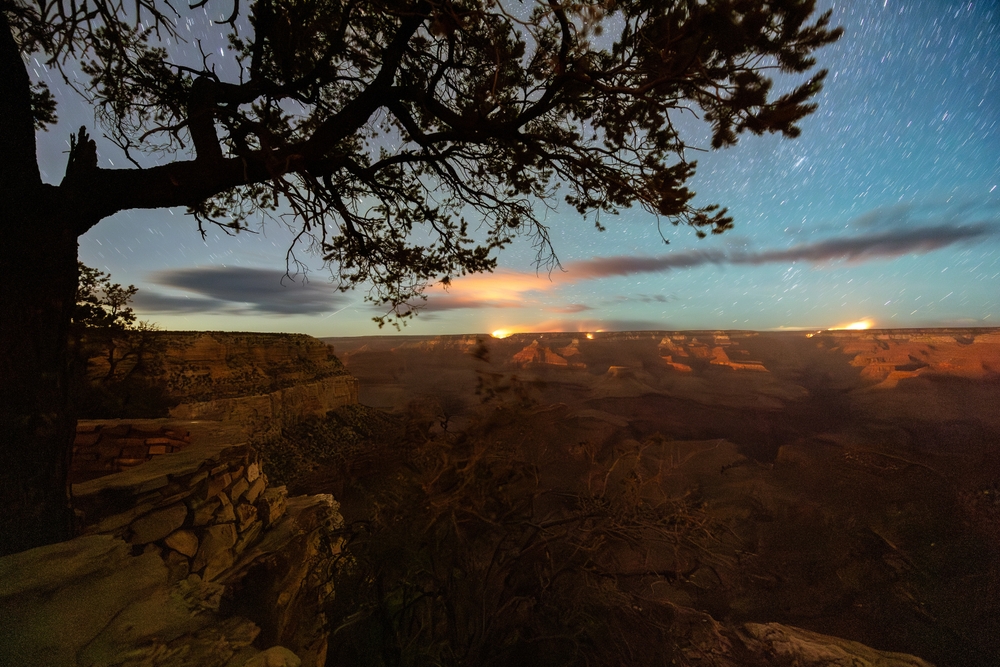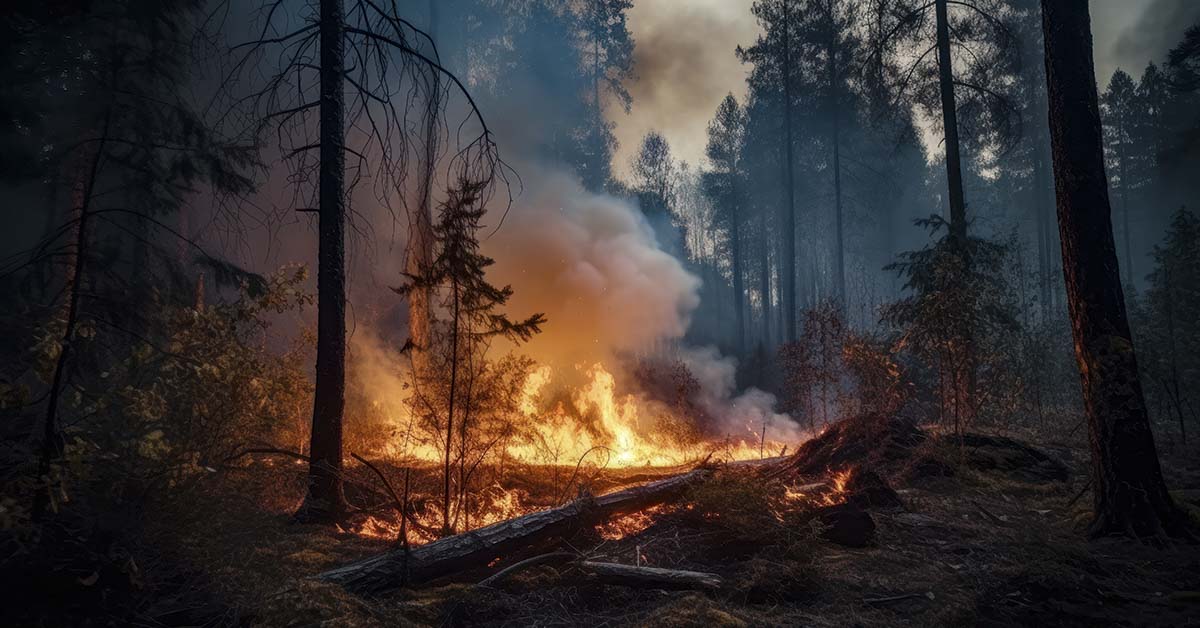Along the Grand Canyon’s North Rim, the Dragon Bravo Fire is officially the largest wildfire in the United States mainland. A lightning strike on July 4 near the North Rim started the wildfire. It has spread over 116,000 acres with only 12% contained as of August, 4. Burning for over a month, experts called the wildfire a “megafire” saying it has developed its own weather system.
Park officials confirmed, “The wildfire ignited due to a lightning strike on Independence Day, and firefighting teams initially opted for a controlled burn strategy”. This decision allowed the fire to smolder at first, but soon it spiraled out of control when hot, dry conditions intensified.
How the Fire Became a Megafire

Not all wildfires reach “megafire” status. The U.S. Interagency Fire Centers deems any wildfire that spreads over more than 100,000 acres of land a “megafire”. The Dragon Bravo Fire crossed this threshold in late July, doubling in size within days.
Megafires are becoming increasingly common in the Western U.S., largely due to climate change and land management practices. Arizona’s climate is exceptionally dry and prone to wildfires. However, only about 3% of wildfires in the U.S. reach megafire status in an average year.
Explosive Growth and Its Drivers

Hot, dry winds and extremely parched brush in the North Rim fueled the fire’s explosive growth. Days of very dry air, extended historic droughts, and record-low humidity in the Southwest have exacerbated the fires. Frequent winds gusting around 20-25 mph complicated putting out the fire, with wind gusts set to increase to 30 mph. Rain and thunderstorms on Friday may help, but strong winds and lightning could cancel out any positive effects.
The Megafire’s Path of Destruction
The blaze has burned over 126,000 acres as of early August, destroying at least 70 structures. One of the structures was the historic Grand Canyon Lodge and several cabins and visitor buildings. The fire forced the closure of the North Rim for the 2025 season, severely impacting both infrastructure and tourism.
This megafire marks the 10th largest wildfire in Arizona history and the largest wildfire in the United States for the 2025 wildfire season. Impacts have stretched to local towns and tribal lands, forcing evacuations and prompting communities to declare transportation, supply and smoke emergencies. The mayor of Fredonia, Arizona, which houses 1,300 people has declared that the town was facing “significant and ongoing wildfire emergency” due to the fire.
The Science Behind Fire-Generated Weather
The fury of the Dragon Bravo Fire intensified so much it created its own localised weather system. The National Park Service and news reports described giant pyrocumulus clouds, also known as “fire clouds”, forming for at least 7 straight days over the blaze. These clouds can produce lightning, wind gusts, and even “fire tornadoes.”
Pyrocumulus clouds usually form over intense heat sources like volcanic eruptions or intense wildfires. Such intense heat rapidly forces the air above it to rise, causing moisture to cool and condense into clouds. Fire-driven clouds can create dangerous erratic winds, hail, and even lightning that sparks new fires.
Firefighting Efforts and Tactical Challenges
With over 1,200 personnel on the ground and in the air, firefighters are fighting for containment. Crews face steep terrain, shifting winds, and unpredictable fire-generated weather that puts them at constant risk. Section Chief Craig Daugherty with Southwest Area Incident Management said the main focus is along the fire’s northern edge. Crews are also targeting areas in the southwest where the fire continues to spread. “The strategy for the Dragon Bravo Fire remains full suppression. Crews will continue connecting, holding and reinforcing lines around the perimeter of the fire”
Impacts on People, Wildlife, and Economy
Residents, park staff, and tourists have all been affected. Rapid evacuations saved lives, but communities and businesses around the North Rim face devastating losses. Smoke accumulation has led to the closing of several trials within the Grand Canyon’s inner rim. The North Rim closure left many without work, and destroyed historic lodges and cabins. Tourism forms a large part of the area’s economy, with the North Rim’s closure affecting jobs and revenues. Wildlife, including endangered condors, face extensive and widespread habitat loss in the region.
The Ongoing Threat
As of August 6, only 13% of the fire had been contained, and dangerous fire weather continued. The fire season in the American West is nowhere near over. The National Interagency Fire Center warns, “We’re in the heart of summer, and the heart of the fire year”. Climate change and current climate trends suggest such disasters will only grow in frequency and intensity, impacting the Grand Canyon and beyond.
Lessons from the Dragon Bravo Fire
The Dragon Bravo Fire shows the need for better fire management and climate adaptation plans. Policymakers are now reviewing how controlled burns are chosen, and how agencies respond to changing fire behavior. Firefighters on the ground face dangerous, unpredictable circumstances, but careful evaluation of this event may improve future wildfire responses. Continuous assessment and adaptation are crucial in a landscape shaped by climate pressures, drought, and megafires.

